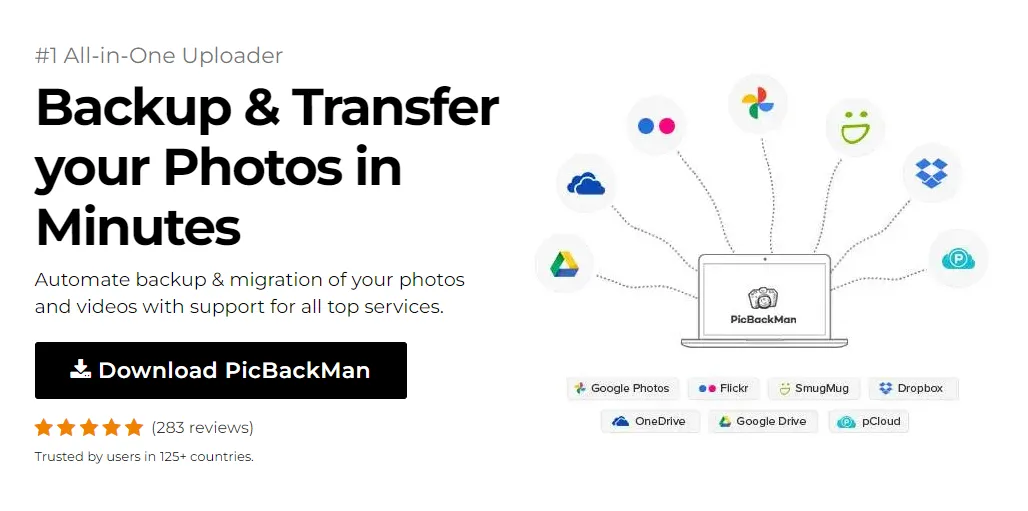
Why is it the #1 bulk uploader?
- Insanely fast!
- Maintains folder structure.
- 100% automated upload.
- Supports RAW files.
- Privacy default.
How can you get started?
Download PicBackMan and start free, then upgrade to annual or lifetime plan as per your needs. Join 100,000+ users who trust PicBackMan for keeping their precious memories safe in multiple online accounts.
“Your pictures are scattered. PicBackMan helps you bring order to your digital memories.”
What is the Difference between Events and Albums in iPhoto?


In the realm of digital photography, organizing your vast collection of images efficiently is paramount. iPhoto, Apple's iconic photo management software, offers two primary organizational tools: Events and Albums. While both serve the purpose of structuring your photo library, they function differently and cater to distinct user preferences and workflows. In this article, we delve deep into the intricacies of Events and Albums in iPhoto, exploring their disparities and guiding you towards optimal utilization.
What is the Difference between Events and Albums in iPhoto?
Events and Albums in iPhoto serve as essential tools for organizing your digital photo collection. Understanding their disparities is crucial for effectively managing your images.
Events:
Events in iPhoto automatically group photos based on the time and date they were taken. Essentially, iPhoto creates Events by analyzing the timestamps embedded in your image files. For instance, if you took a series of photos during a vacation, iPhoto would likely group them into a single Event labeled with the corresponding dates. This automatic categorization simplifies the process of organizing your photos chronologically, offering a cohesive timeline of your experiences.
Albums:
On the other hand, Albums in iPhoto are manually curated collections of photos based on user-defined criteria. Unlike Events, which rely on automated sorting, Albums allow users to handpick specific photos and group them together based on themes, subjects, or any other desired criteria. For example, you could create an Album showcasing your favorite landscape shots or compile a collection of family portraits. Albums offer greater flexibility and customization options, empowering users to organize their photos according to their unique preferences.
Exploring the Functionality of Events and Albums
To gain a deeper understanding of the disparities between Events and Albums in iPhoto, let's explore their functionality in more detail.
| Features | Events | Albums |
|---|---|---|
| Automatic Organization | Yes | No |
| Manual Curation | No | Yes |
| Chronological Sorting | Yes | No |
| Customizable Grouping | No | Yes |
| Dynamic Updates | Yes | No |
| Keyword Tagging | Limited | Yes |
Automatic Organization with Events
Events streamline the photo organization process by automatically grouping photos based on their timestamps. This feature is particularly advantageous for users who prefer a hands-off approach to organization or those who frequently capture photos in chronological order, such as during events or vacations. By leveraging metadata embedded within the image files, iPhoto seamlessly creates Events, providing users with a structured overview of their photo library.
Manual Curation with Albums
Unlike Events, Albums offer users full control over the organization of their photos. Users can manually curate Albums by selecting individual photos and grouping them together based on personalized criteria. Whether it's creating themed collections, organizing by location, or compiling snapshots of specific subjects, Albums empower users to tailor their photo organization to suit their preferences. This hands-on approach allows for greater flexibility and customization, catering to diverse user needs.
Chronological Sorting vs. Customizable Grouping
One of the key distinctions between Events and Albums lies in their sorting mechanisms. Events prioritize chronological sorting, organizing photos based on their timestamps to create a cohesive timeline of events. In contrast, Albums prioritize customizable grouping, allowing users to organize photos according to their own criteria, irrespective of chronological order. While Events offer a structured timeline of memories, Albums provide the flexibility to categorize photos based on themes, subjects, or any other user-defined parameters.
Dynamic Updates vs. Static Collections
Events exhibit dynamic behavior, automatically updating as new photos are added to your library. This real-time synchronization ensures that Events accurately reflect the latest additions to your photo collection, maintaining an up-to-date timeline of your memories. Conversely, Albums are static collections that require manual updates. Once created, Albums remain unchanged unless users manually add or remove photos. While Events offer dynamic organization, Albums provide stable, curated collections tailored to specific preferences.
Keyword Tagging and Metadata Management
Albums offer robust metadata management capabilities, including keyword tagging, descriptions, and other metadata attributes. Users can enrich their photo organization by adding descriptive keywords to photos within Albums, facilitating easy searching and categorization. In contrast, Events offer limited support for keyword tagging and metadata management, primarily relying on chronological sorting rather than keyword-based organization. This key difference highlights Albums' superior metadata management capabilities for users seeking advanced organization features.
Quick Tip to ensure your videos never go missing
Videos are precious memories and all of us never want to ever lose them to hard disk crashes or missing drives. PicBackMan is the easiest and simplest way to keep your videos safely backed up in one or more online accounts. Simply Download PicBackMan (it's free!), register your account, connect to your online store and tell PicBackMan where your videos are - PicBackMan does the rest, automatically. It bulk uploads all videos and keeps looking for new ones and uploads those too. You don't have to ever touch it.
FAQs
What is the primary difference between Events and Albums in iPhoto?
Events automatically organize photos based on timestamps, creating chronological groupings, while Albums allow users to manually curate collections based on personalized criteria.
Can I add keywords to photos within Events in iPhoto?
Events offer limited support for keyword tagging and metadata management compared to Albums, which provide robust metadata management capabilities, including keyword tagging.
Do Events in iPhoto update dynamically as new photos are added?
Yes, Events exhibit dynamic behavior and automatically update to reflect the latest additions to your photo library, ensuring an up-to-date timeline of memories.
How do Albums differ from Events in terms of sorting mechanisms?
Events prioritize chronological sorting based on timestamps, whereas Albums prioritize customizable grouping, allowing users to organize photos according to their own criteria, irrespective of chronological order.
Can I create themed collections or organize photos by subjects within Events?
No, Events primarily focus on chronological sorting and do not offer the customization options available in Albums for creating themed collections or organizing photos by subjects.
Are Albums in iPhoto static collections, or do they update dynamically?
Albums are static collections that require manual updates. Once created, Albums remain unchanged unless users manually add or remove photos, unlike Events, which update dynamically.
Conclusion
In conclusion, understanding the difference between Events and Albums in iPhoto is essential for effective photo organization. While Events offer automatic, chronological sorting based on timestamps, Albums provide manual curation and customizable grouping options. Whether you prefer a hands-off approach to organization or crave full control over your photo collections, iPhoto's Events and Albums cater to diverse user needs. By leveraging the unique features of each tool, users can streamline their photo management process and create personalized, organized libraries that showcase their memories effectively.






